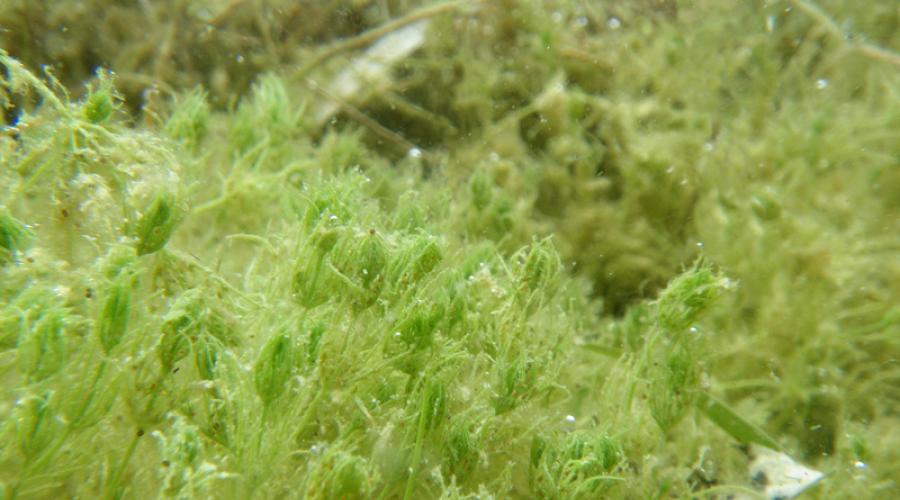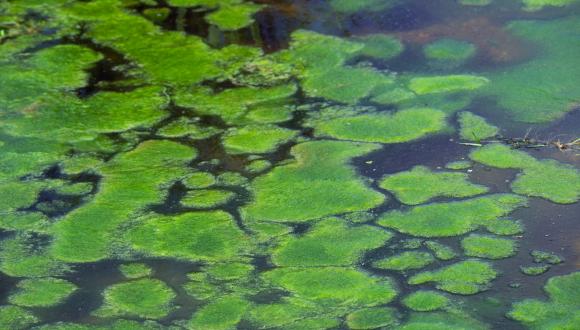
Green algae
Scotland is home to many types of green algae, but stoneworts and desmids are of most interest.
Desmids
Desmids are remarkable as their single cell is symmetrical. Many desmids are symmetrical in more than one plane. A desmid’s corners may be elongated, typically forming two or three ‘arms’ on each half-cell.
Botanists who first examined desmids originally thought they were looking at pairs of cells.
Stoneworts
The UK is home to 33 species of Stoneworts, or charophytes, which grow in freshwater habitats and salty lagoons. They’re often the first large plants to colonise new or disturbed habitats.
In freshwater lochs, where light penetration allows, stoneworts may form large carpets in deeper water, providing habitat for other species. They may also release chemicals that discourage the growth of some microscopic algae, helping to keep the water clear.
Stoneworts produce oospores to reproduce, and these can remain viable for a number of years. Oospores transported to new habitats by water movements, animals or birds can lie dormant until conditions are suitable for growth.
A few types of stonewort are found in lochs with relatively low nutrient levels and comparatively soft water. But most occur in harder waters or are found growing on sandy substrates, e.g. machair lochs in the Western Isles.
Search for different types of stonewort on the NBN Atlas Scotland website.
Conservation of stonewort habitats
Many of the UK’s stoneworts are rare, so conservation of their habitats in Scotland is particularly important.
Several rare stoneworts occur in brackish water, but two associated with moderate or low nutrient levels are found in freshwater lochs.
The rare stoneworts found in freshwater lochs are:
- least stonewort (Nitella confervacea) – present in Northern and Western Isles, Morar and Speyside
- slender stonewort (Nitella gracilis) – survives in Ayrshire and Sutherland




